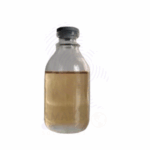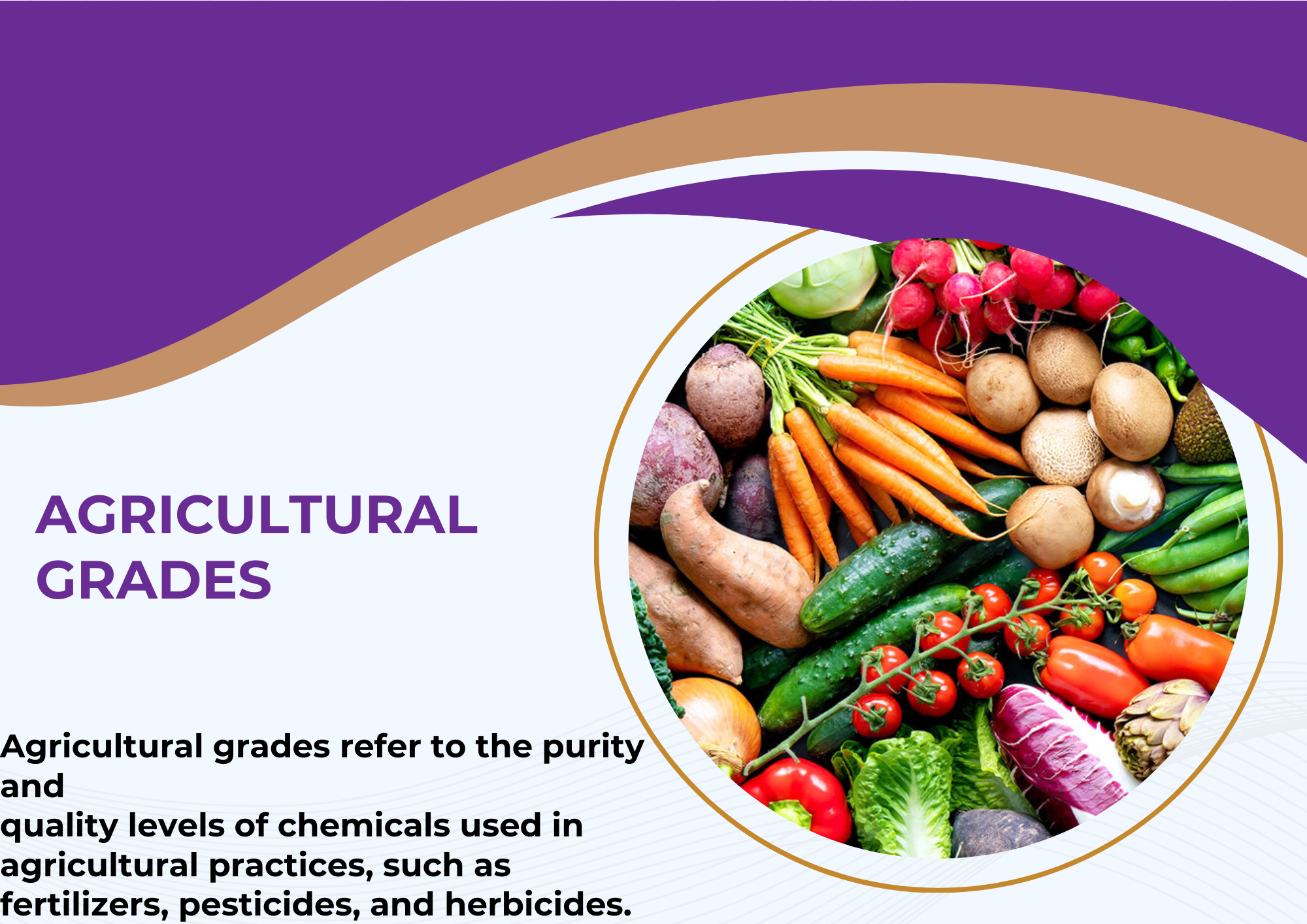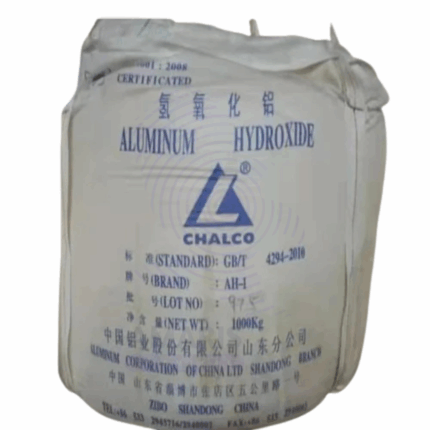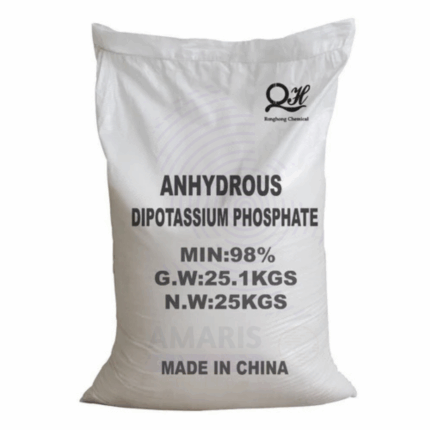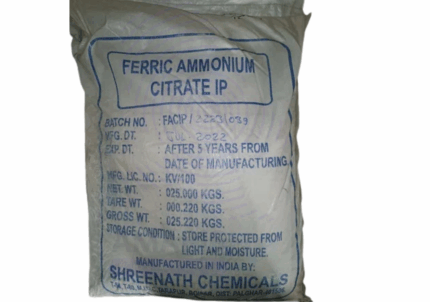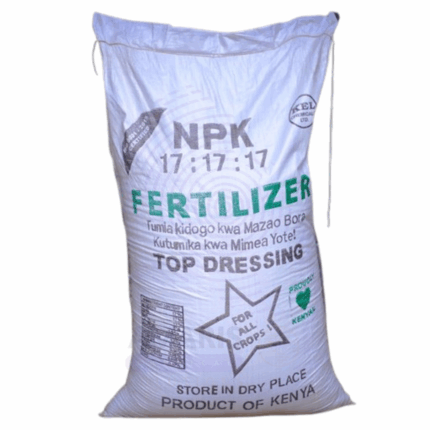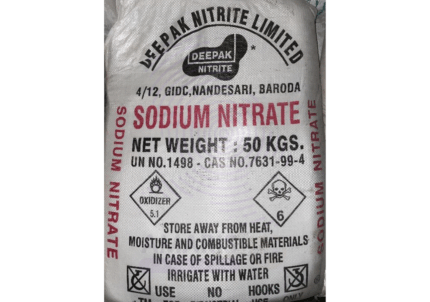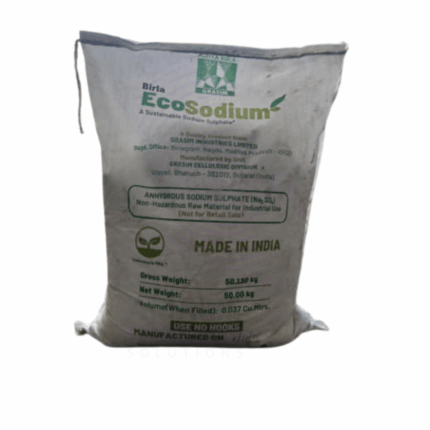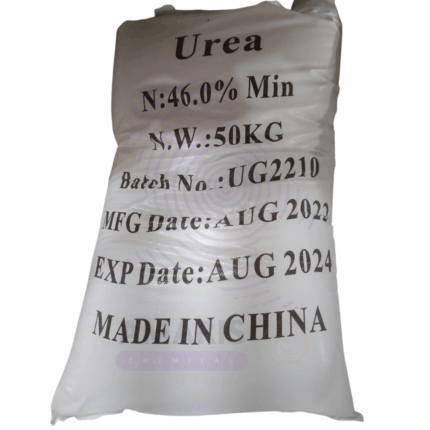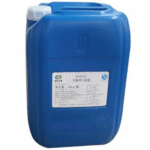
Ammonium Lactate
$ 7.89 Original price was: $ 7.89.$ 7.78Current price is: $ 7.78.
Ammonium Sulphate
$ 1.18
Whatsapp Order
Ammonium Sulphate is an inorganic salt with the formula (NH₄)₂SO₄. It appears as a white crystalline solid, highly soluble in water, and is widely used as a fertilizer due to its high nitrogen and sulfur content. Besides agriculture, ammonium sulphate finds extensive use in industrial processes, food additives, pharmaceutical applications, and water treatment. It acts as a soil amendment to improve nitrogen levels and acidity, a flocculating agent in water purification, and a stabilizer or precipitant in biochemical and pharmaceutical formulations.
Description
Table of Contents
Toggle
Ammonium Sulphate
Primary Uses
- Agriculture & Fertilizers
- Used predominantly as a nitrogen fertilizer to provide plants with essential nitrogen and sulfur nutrients.
- Helps improve soil fertility and crop yields, especially on alkaline soils where it also lowers soil pH.
- Commonly applied for cereal crops, vegetables, fruits, and turfgrass.
- Industrial Applications
- Used as a flame retardant in textiles and paper products.
- Acts as a precipitating agent in protein purification and biochemical research.
- Utilized as a stabilizer in some pharmaceutical formulations.
- Water Treatment
- Functions as a flocculant to aid in the removal of impurities and suspended solids from wastewater.
- Helps control pH and remove contaminants.
- Food Industry
- Sometimes used as an acidity regulator and dough conditioner in baking.
- Listed as a food additive (E517) in some regions, employed as an anti-caking agent or dough improver.
Secondary Uses
- Pharmaceuticals
- Used as an excipient and stabilizer in tablet and capsule formulations.
- Occasionally used in intravenous solutions to supply ammonium ions.
- Laboratory & Research
- Used in protein precipitation protocols such as ammonium sulfate precipitation to fractionate proteins by solubility.
- Employed as a reagent for analytical chemistry.
- Other Niche Applications
- Used in the manufacture of flame retardants, dyes, and other chemicals.
- Occasionally in textile industry as a mordant.
KEY PRODUCT FEATURES
1. Basic Identification Attributes
- Chemical Name (IUPAC): Ammonium sulfate
- Common/Trade Names: Ammonium Sulphate, Diammonium Sulfate
- CAS Number: 7783-20-2
- HS Code: 3102.20.00
- Molecular Formula: (NH₄)₂SO₄
- Synonyms: Diammonium sulfate, Ammonium sulphate
2. Physical & Chemical Properties
- Physical State: White crystalline powder or granules
- Color & Odor: White, odorless
- Melting Point: Decomposes at ~235 °C
- Boiling Point: N/A (decomposes)
- Density: ~1.77 g/cm³
- Solubility: Highly soluble in water (~70.6 g/100 mL at 25°C), insoluble in alcohol and organic solvents
- pH Level: Aqueous solution is mildly acidic (~5.5–6.0)
- Vapor Pressure: Negligible
- Flash Point: Non-flammable
- Stability: Stable under normal conditions; decomposes on heating
3. Safety & Hazard Attributes
- Hazard Class (GHS): Not classified as hazardous; irritant to eyes and skin
- NFPA Ratings: Health 1, Flammability 0, Reactivity 0
- Exposure Limits (OSHA PEL/ACGIH TLV): No specific limits, low toxicity
- Reactivity: Stable; incompatible with strong oxidizers and strong bases
- Potential Hazards: Dust may cause irritation to respiratory tract; large ingestion can be harmful
4. Storage & Handling Attributes
- Storage Conditions: Store in a dry, cool, well-ventilated area away from moisture
- Container Type: Plastic or metal drums/bags with moisture barrier
- Shelf Life: 2–3 years if stored properly in sealed containers
- Special Handling: Avoid dust formation; use protective equipment when handling large quantities
5. Regulatory & Compliance Attributes
- Regulatory Status:
- FDA (USA): Approved as a food additive (21 CFR 184.1139)
- EFSA (EU): Approved (E517)
- JECFA: ADI not specified (generally recognized as safe)
- Transportation: Not classified as hazardous
- Waste Disposal: Dispose according to local regulations; non-hazardous waste
6. Environmental & Health Impact
- Ecotoxicity: Low toxicity to aquatic life but excessive use can cause eutrophication
- Persistence: Biodegradable; ammonium ions assimilate in soil and water
- Carcinogenicity: Not carcinogenic or mutagenic
- Biodegradability: Biodegradable
SAFETY HANDLING PRECAUTIONS
Safety Handling Precautions
- Personal Protective Equipment (PPE): Gloves, goggles, dust mask when handling powders to prevent inhalation and skin/eye contact.
- Handling: Avoid generating dust; handle in well-ventilated area.
- Storage: Keep container tightly sealed; protect from moisture.
- Hygiene: Wash hands thoroughly after use; do not eat or smoke while handling.
First Aid Measures
- Inhalation: Move to fresh air; if irritation or breathing difficulties occur, seek medical help.
- Skin Contact: Wash with plenty of water and soap; if irritation develops, consult a doctor.
- Eye Contact: Rinse eyes immediately with water for at least 15 minutes; seek medical attention if irritation persists.
- Ingestion: Rinse mouth; drink plenty of water; seek medical attention if large quantities ingested.
Firefighting Measures
- Fire Hazards: Non-flammable and non-combustible.
- Extinguishing Media: Use water spray, foam, dry chemical, or CO₂ for surrounding fires.
- Special Precautions: Avoid dust inhalation during fire; wear protective breathing apparatus if necessary.
Related products
Aluminum hydroxide
Aluminum Hydroxide, chemically known as Al(OH)₃, is a white, odorless, and odorless powder or gelatinous substance. It is widely used in pharmaceuticals as an antacid to neutralize stomach acid and relieve indigestion and heartburn. Beyond healthcare, aluminum hydroxide is a crucial component in water purification, fire retardants, and as a precursor or filler in various industrial applications. It functions as a flame retardant by releasing water upon heating, thus cooling the material and diluting flammable gases. Due to its amphoteric nature, it can react both as an acid and base, enhancing its versatility. Aluminum hydroxide is often utilized in manufacturing aluminum salts and in producing aluminum oxide.
Ammonium Chloride
Ammonium chloride is a white crystalline salt with a salty, slightly acidic taste. It is highly soluble in water and is widely used in various industrial, agricultural, and pharmaceutical applications. It acts as a nitrogen source in fertilizers, a flux in metalworking, and an expectorant in medicine. Its versatility and relatively low toxicity make it an important compound in multiple sectors.
Dipotassium Hydrogen Phosphate
Dipotassium Hydrogen Phosphate (also known as dipotassium phosphate, DKP) is an inorganic salt used widely as a buffering agent, emulsifier, and nutritional supplement in various industries. It is a white, crystalline, highly water-soluble powder with alkaline properties. DKP plays a vital role in food processing, pharmaceuticals, water treatment, and agriculture due to its ability to stabilize pH, improve texture, and supply essential potassium and phosphate ions.
Ferric Ammonium Citrate
Ferric Ammonium Citrate is a dark green to black crystalline or granular inorganic compound composed of iron, ammonium ions, and citrate ions. It is a complex salt of citric acid with ferric iron (Fe³⁺) and ammonium. This compound is highly soluble in water, forming a greenish solution, and is widely utilized as a source of iron in various chemical, pharmaceutical, photographic, and food applications. It acts as a mild oxidizing agent and an iron supplement, valued for its bioavailability and ease of incorporation into formulations. Ferric Ammonium Citrate is typically available in different formulations distinguished by their water and ammonium content, such as green and brown types.
NPK 17-17-17
NPK 17-17-17 is a balanced, water-soluble fertilizer containing three essential macronutrients: Nitrogen (N), Phosphorus (P), and Potassium (K), each at 17% concentration. This balanced formula supports overall plant growth by providing vital nutrients for root development, flowering, and fruiting. It is commonly used in various agricultural and horticultural applications to optimize crop yield and quality.
Sodium Nitrate
Sodium Nitrate is an inorganic white crystalline solid with the chemical formula NaNO₃. This 25kg packaged industrial-grade product serves as a powerful oxidizing agent and nitrogen source, widely used in fertilizers, pyrotechnics, food preservation, and chemical manufacturing. Its high solubility and stability make it ideal for controlled oxidation processes and nitrate salt production.
Sodium Sulphate
Sodium Sulphate (Na₂SO₄) is a white crystalline powder or granule, odorless and highly soluble in water. This 25kg packaged product is widely used in detergents, glass manufacturing, chemical industries, and pulp and paper processing. It acts as a filler, bulking agent, and drying agent, with excellent stability and non-reactivity under standard storage conditions. Its cost-effectiveness and availability make it an essential raw material in many industrial processes.
Urea
Urea is a highly water-soluble organic compound widely used as a nitrogen-release fertilizer in agriculture. It serves as a key source of nitrogen for plant growth and development. Apart from agriculture, urea is utilized in various industrial applications such as resin production, animal feed, and chemical manufacturing. Its high nitrogen content and easy handling make it a versatile and essential raw material in multiple sectors.


 Preservatives(food)
Preservatives(food) Flavor Enhancers
Flavor Enhancers Acidulants
Acidulants Sweeteners
Sweeteners Antioxidants
Antioxidants Colorants(food)
Colorants(food) Nutraceutical Ingredients (food)
Nutraceutical Ingredients (food) Nutrient Supplements
Nutrient Supplements Emulsifiers
Emulsifiers
 Collectors
Collectors Dust Suppressants
Dust Suppressants Explosives and Blasting Agents
Explosives and Blasting Agents Flocculants and Coagulants
Flocculants and Coagulants Frothers
Frothers Leaching Agents
Leaching Agents pH Modifiers
pH Modifiers Precious Metal Extraction Agents
Precious Metal Extraction Agents
 Antioxidants(plastic)
Antioxidants(plastic) Colorants (Pigments, Dyes)
Colorants (Pigments, Dyes) Fillers and Reinforcements
Fillers and Reinforcements Flame Retardants
Flame Retardants Monomers
Monomers Plasticizers
Plasticizers Polymerization Initiators
Polymerization Initiators Stabilizers (UV, Heat)
Stabilizers (UV, Heat)
 Antifoaming Agents
Antifoaming Agents Chelating Agents
Chelating Agents Coagulants and Flocculants
Coagulants and Flocculants Corrosion Inhibitors
Corrosion Inhibitors Disinfectants and Biocides
Disinfectants and Biocides Oxidizing Agents
Oxidizing Agents pH Adjusters
pH Adjusters Scale Inhibitors( water)
Scale Inhibitors( water)
 Antioxidants(cosmetic)
Antioxidants(cosmetic) Emollients
Emollients Fragrances and Essential Oils
Fragrances and Essential Oils Humectants
Humectants Preservatives
Preservatives Surfactants(cosmetic)
Surfactants(cosmetic) Thickeners
Thickeners UV Filters
UV Filters
 Fertilizers
Fertilizers Soil Conditioners
Soil Conditioners Plant Growth Regulators
Plant Growth Regulators Animal Feed Additives
Animal Feed Additives Biostimulants
Biostimulants Pesticides (Herbicides, Insecticides, Fungicides)
Pesticides (Herbicides, Insecticides, Fungicides)
 Active Pharmaceutical Ingredients (APIs)
Active Pharmaceutical Ingredients (APIs) Excipients
Excipients Solvents(pharmaceutical)
Solvents(pharmaceutical) Antibiotics
Antibiotics Antiseptics and Disinfectants
Antiseptics and Disinfectants Vaccine Adjuvants
Vaccine Adjuvants Nutraceutical Ingredients (pharmaceutical)
Nutraceutical Ingredients (pharmaceutical) Analgesics & Antipyretics
Analgesics & Antipyretics
 Analytical Reagents
Analytical Reagents Solvents(lab)
Solvents(lab) Chromatography Chemicals
Chromatography Chemicals Spectroscopy Reagents
Spectroscopy Reagents microbiology-and-cell-culture-reagents
microbiology-and-cell-culture-reagents Molecular Biology Reagents
Molecular Biology Reagents Biochemical Reagents
Biochemical Reagents Inorganic and Organic Standards
Inorganic and Organic Standards Laboratory Safety Chemicals
Laboratory Safety Chemicals Specialty Laboratory Chemicals(Special Laboratory Equipment)
Specialty Laboratory Chemicals(Special Laboratory Equipment)
 Demulsifiers
Demulsifiers Hydraulic Fracturing Fluids
Hydraulic Fracturing Fluids Scale Inhibitors(oil)
Scale Inhibitors(oil) Surfactants(oil)
Surfactants(oil) Drilling Fluids
Drilling Fluids
 Dyes and Pigments
Dyes and Pigments Bleaching Agents
Bleaching Agents Softening Agents
Softening Agents Finishing Agents
Finishing Agents Antistatic Agents
Antistatic Agents
 Admixtures
Admixtures Waterproofing Agents
Waterproofing Agents Sealants and Adhesives
Sealants and Adhesives Curing Compounds
Curing Compounds Concrete Repair Chemicals
Concrete Repair Chemicals Anti-Corrosion Coatings
Anti-Corrosion Coatings
 Surfactants(cleaning)
Surfactants(cleaning) Builders
Builders Enzymes
Enzymes Solvents (Cleaning)
Solvents (Cleaning) Fragrances
Fragrances
 Electronic Chemicals
Electronic Chemicals Catalysts
Catalysts Lubricants
Lubricants Photographic Chemicals
Photographic Chemicals Refrigerants
Refrigerants Automotive chemicals
Automotive chemicals Pyrotechnic Chemicals
Pyrotechnic Chemicals
 Biodegradable Surfactants
Biodegradable Surfactants Bio-based Solvents
Bio-based Solvents Renewable Polymers
Renewable Polymers Carbon Capture Chemicals
Carbon Capture Chemicals Wastewater Treatment Chemicals
Wastewater Treatment Chemicals
 Pigments
Pigments Solvents(paint)
Solvents(paint) Specialty Coatings
Specialty Coatings Binders/Resins
Binders/Resins Additives
Additives Driers
Driers Anti-Corrosion Agents
Anti-Corrosion Agents Functional Coatings
Functional Coatings Application-Specific Coatings
Application-Specific Coatings
 Fresh Herbs
Fresh Herbs Ground Spices
Ground Spices Whole Spices
Whole Spices Spice Blends
Spice Blends Dried Herbs
Dried Herbs
 Leavening Agents
Leavening Agents Dough Conditioners
Dough Conditioners Flour Treatments
Flour Treatments Fat Replacers
Fat Replacers Decoratives
Decoratives Preservatives(baking)
Preservatives(baking)
 Plasticizers & Softeners
Plasticizers & Softeners Reinforcing Agents
Reinforcing Agents Adhesion Promoters
Adhesion Promoters Vulcanizing Agents
Vulcanizing Agents Antidegradants
Antidegradants Blowing Agents
Blowing Agents Fillers & Extenders
Fillers & Extenders Accelerators & Retarders
Accelerators & Retarders
